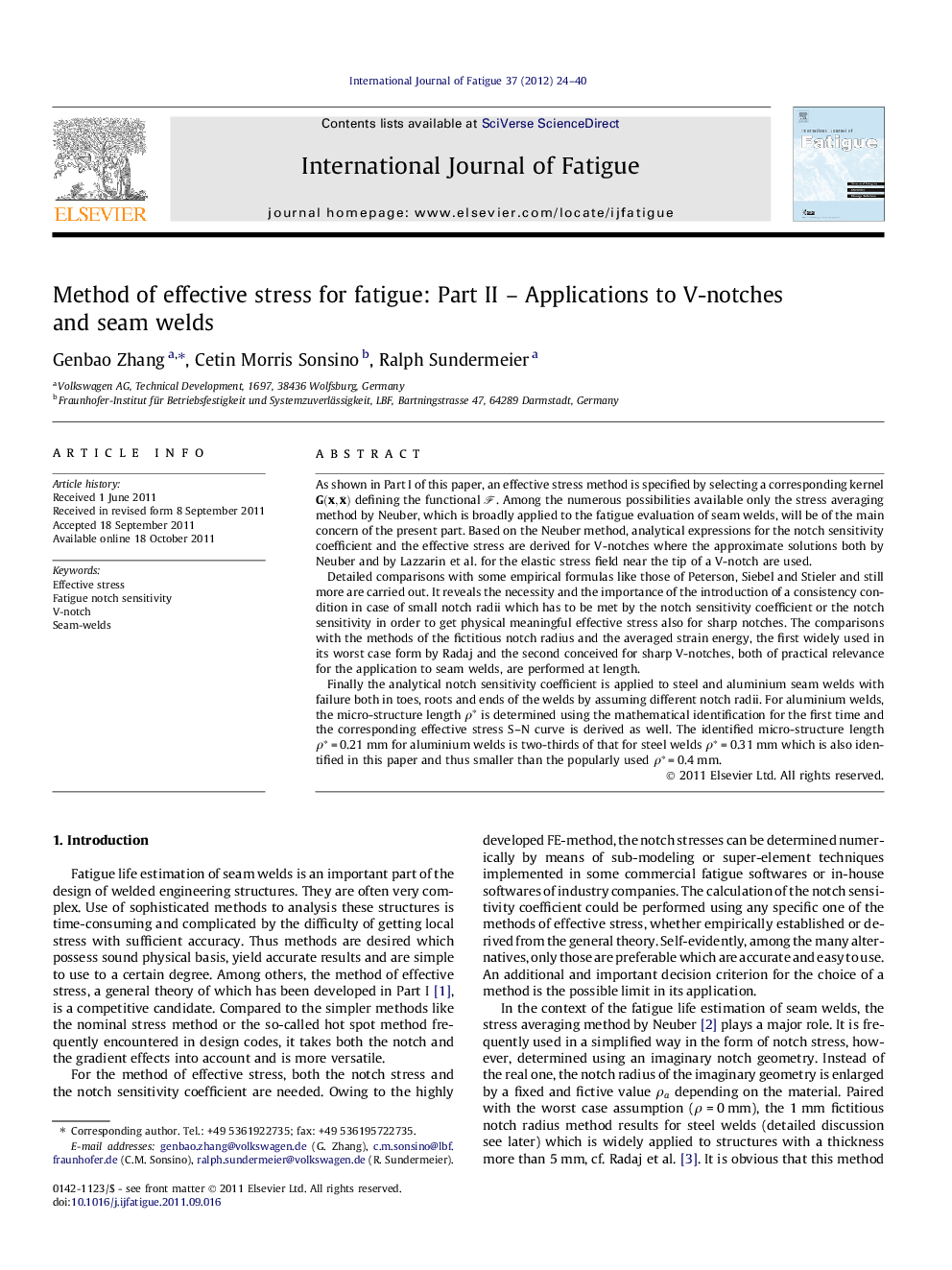| Article ID | Journal | Published Year | Pages | File Type |
|---|---|---|---|---|
| 777759 | International Journal of Fatigue | 2012 | 17 Pages |
As shown in Part I of this paper, an effective stress method is specified by selecting a corresponding kernel G(x,x¯) defining the functional FF. Among the numerous possibilities available only the stress averaging method by Neuber, which is broadly applied to the fatigue evaluation of seam welds, will be of the main concern of the present part. Based on the Neuber method, analytical expressions for the notch sensitivity coefficient and the effective stress are derived for V-notches where the approximate solutions both by Neuber and by Lazzarin et al. for the elastic stress field near the tip of a V-notch are used.Detailed comparisons with some empirical formulas like those of Peterson, Siebel and Stieler and still more are carried out. It reveals the necessity and the importance of the introduction of a consistency condition in case of small notch radii which has to be met by the notch sensitivity coefficient or the notch sensitivity in order to get physical meaningful effective stress also for sharp notches. The comparisons with the methods of the fictitious notch radius and the averaged strain energy, the first widely used in its worst case form by Radaj and the second conceived for sharp V-notches, both of practical relevance for the application to seam welds, are performed at length.Finally the analytical notch sensitivity coefficient is applied to steel and aluminium seam welds with failure both in toes, roots and ends of the welds by assuming different notch radii. For aluminium welds, the micro-structure length ρ∗ is determined using the mathematical identification for the first time and the corresponding effective stress S–N curve is derived as well. The identified micro-structure length ρ∗ = 0.21 mm for aluminium welds is two-thirds of that for steel welds ρ∗ = 0.31 mm which is also identified in this paper and thus smaller than the popularly used ρ∗ = 0.4 mm.
